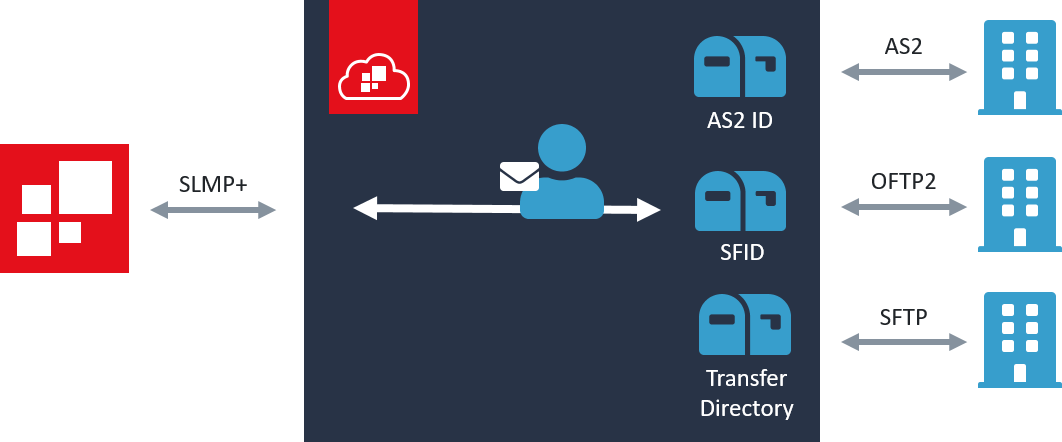The metadata-based routing is a routing method which allows you to send messages to your partners without being restricted to a specific file format or content. With this method, no structured files are necessary as the routing is independent of the file content. It is the communication protocol that allows the identification of your EDI system and those of your partners by using a unique EDI address.
When connecting your BIS to the gateway of the Communication Service, the metadata-based routing uses an SLMP+ connection which is a specific SEEBURGER protocol. This SLMP+ protocol includes the transmission of the so-called SEEID which is a unique ID to identify your EDI system at the gateway. If you are not using a BIS, it is also possible to use an SFTP client or a REST API to connect to the gateway. When configuring an SFTP or a REST connection to the gateway, you will be assigned a SEEID as well.
Each partner can use the protocol of their choice: The metadata-based routing uses the „forwarder fields“ which are used by the preferred communication protocol to transmit a unique EDI address. This address is assigned to each EDI system involved and is available publicly on the internet. This unique EDI address depends on the preferred protocol:
AS2: a unique AS2 ID
OFTP2: a unique SFID (usually the odette code)
SFTP: a unique transfer directory on the gateway‘s SFTP server
The gateway routes messages between you and your partners by using the unique EDI addresses to identify the sender and the recipient of a message.

Find more information here: